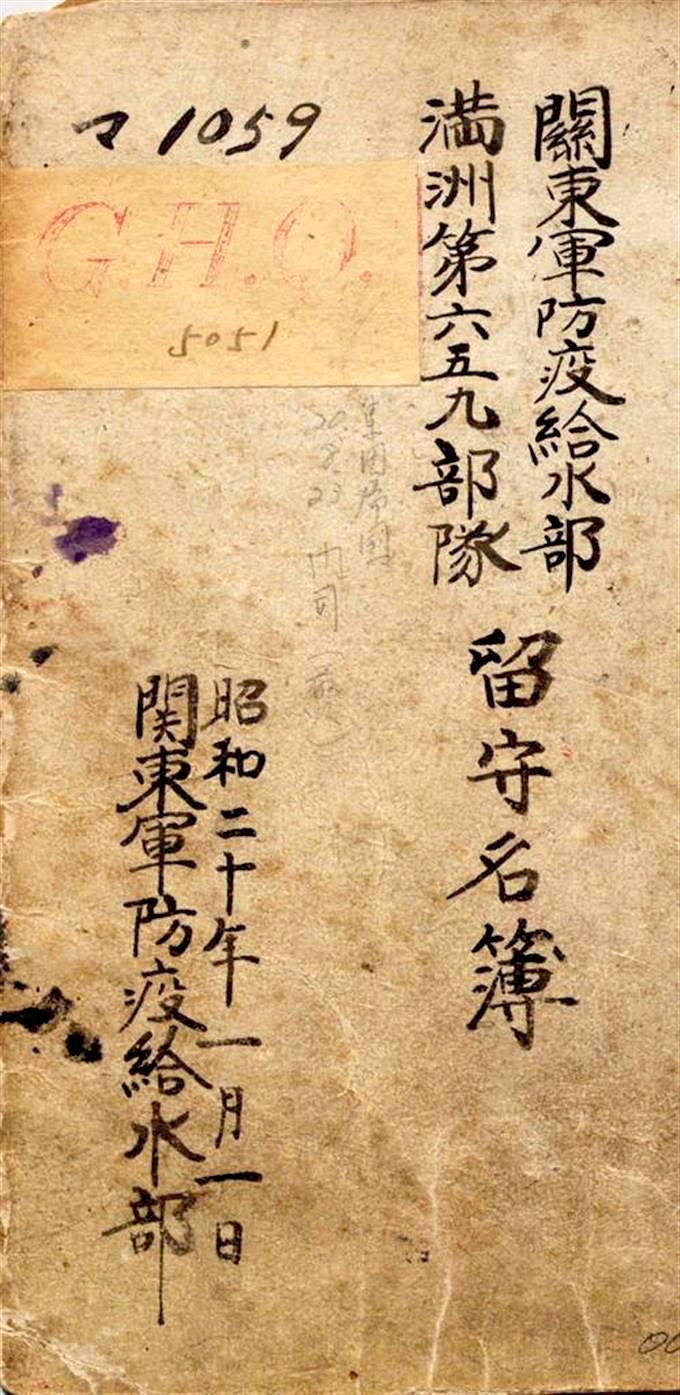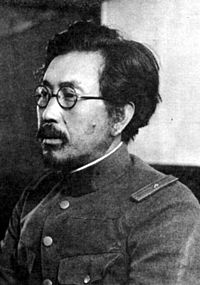
Unit 731,
Ishii-Butai, Kanto-Gun Boueki-kyusui-Bu

Surgeon General Shirō Ishii (石井 四郎 Ishii Shirō, June 25, 1892 –
October 9, 1959) was a Japanese army medical officer, microbiologist
and the director of Unit 731, a biological warfare unit of the Imperial
Japanese Army involved in forced and frequently lethal human
experimentation during the Second Sino-Japanese War (1937–1945).-
Wikipedia, https://en.wikipedia.org/wiki/Shir%C5%8D_Ishii
 Major, later General Shirō Ishii (1892-1959), in
1932
Major, later General Shirō Ishii (1892-1959), in
1932
In the last years of his life [1959], Ishii's medical condition worsened.
"One day he took some sample tissue from himself to the University of Tokyo's Faculty of Medicine and asked one of his former subordinates to examine it, without telling him to whom It belonged [recalls Harumi]. When he was told that the tissue was riddled by cancer, he proudly shouted that he had thought so too. No doctor had dared tell him he was suffering from cancer of the throat. He eventually underwent surgery and lost his voice. He was an earnest student of medicine to his last day, taking notes on his physical condition." - Daughter [Harumi ISHI]'s view.
He told his old professor Ren Kimura who came to visit him at that time: "It's all over now," writing the message because he could no longer speak. His hero, Admiral Togo, the great strategist of the Russo-Japanese War (whose name he had used as a pseudonym) had also been a victim of throat cancer.
"Shortly before his death, he asked to be baptised by the late Dr Herman Heuvers, former President of Sophia University in Tokyo," says Harumi. "Dr Heuvers and my father were acquainted with each other since before the war. My father had much respect for the German people and their culture." Baptised into the Roman Catholic Church, Ishii took the name Joseph. "It seems to me that my father felt relieved somehow," says Harumi.42 Ishii died on October 9th, 1959, aged sixty-seven. - Quotation is from his daughter[Harumi ISHI]'s view.
From, Williams and Wallace, Unit 731: the Japanese army's secret
of secrets (1989:298)
**
Peter Williams and David Wallace, 1989. Unit 731: the Japanese army's secret of secrets. London: Hodder & Stoughton.
Introduction by Dr R. John Pritchard
https://www.linkedin.com/in/r-john-pritchard-7b776226
Authors' Introduction
Part 01. THE SECRET
1. A DISCOVERY
2. HIGHER FORMS OF KILLING
3. EXPERIMENTS IN MANCHURIA
4. THE SECRET OF SECRETS
5. PRISONERS IN MUKDEN
6. WAGING GERM WARFARE
7. THE END OF PINGFAN
Part 02. DISCLOSURE
8. WHAT ALLIED INTELLIGENCE KNEW
9. MACARTHUR: FREEDOM,TOLERANCE AND JUSTICE...
10. MURRAY SANDERS
11. ISHII INVESTIGATED
12. EVIDENCE AND TRIALS
13. SOVIET INTERROGATIONS AND INFORMATION
14. FURTHER INTERROGATIONS
15. US SECRET KNOWLEDGE
16. SIX DAYS AT KHABAROVSK
Part 03. CONSEQUENCES
17. KOREAN War
18. FORTY YEARS ON
[Part 04] Appendices
Appendix A THE NAITO DOCUMENT
Appendix B THE SANDERS REPORT
Appendix C THE THOMPSON REPORT
Appendix D THE INGLIS REPORT
Notes
Index
ILLUSTRATIONS
between pages 228 and 229
General Shiro Ishii (TVS)
Ishii with his family in 1938 (Harumi Ishii)
Pingfan from the air (ShimozatoIMorimura)
Ishii's plan of Pingfan (ShimozatoIMorimura)
Recreation at Pingfan (ShimozatoIMorimura)
Japanese propaganda poster (ShimozatoIMorimura)
Japanese balloon bomb (American Historical Museum, Washington)
Plane of the 731 Air Unit (ShimozatoIMorimura)
Uezono (Uezono)
Kitano (Uezono)
Naito (Asano)
Yoshimura (Asano)
Okamoto (Asano)
Ishikawa (TVS)
Tanaka (TVS)
Yagisawa (TVS)
Last page of Naito report (TVS)
Japanese list of members of Unit 731 (ShimozatoIMorimura)
Relief supplies arriving at Mukden (Arthur Christie)
Pingfan in ruins (ShimozatoIMorimura)
Ishii in 1946 (Harumi Ishii)
Murray Sanders (TVS)
Thompson and Weber entertained at Ishii's house (Harumi Ishii)
USSR, The War criminal court report, 1950 written in Japanese.
Links
Links, in Japanese
文献
(c) Mitzub'ixi Quq Chi'j. Copyright, 2016-2019